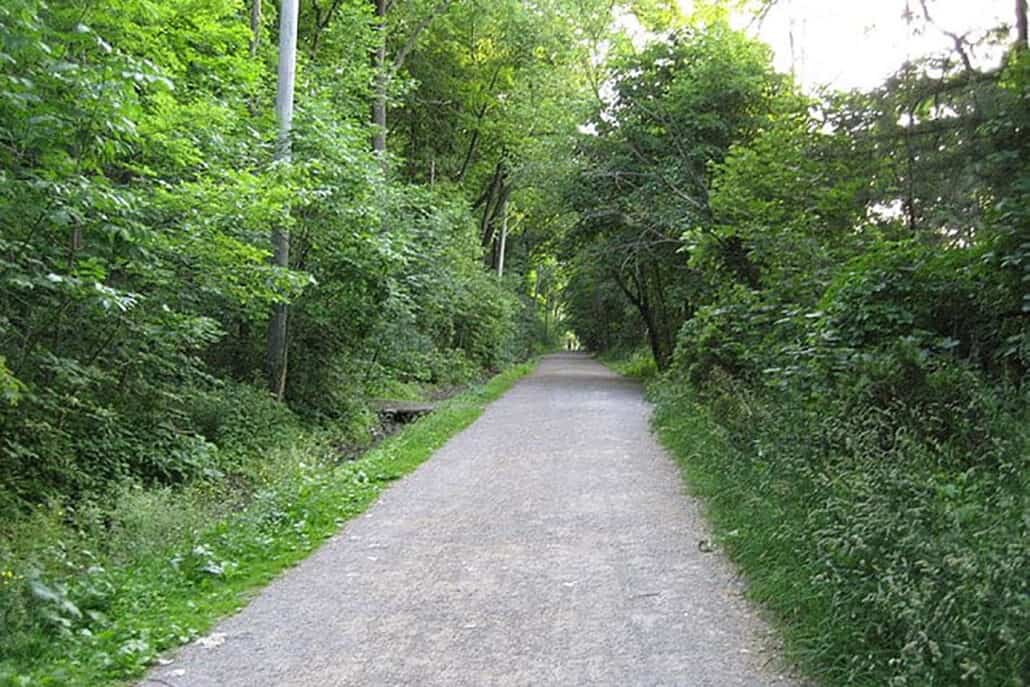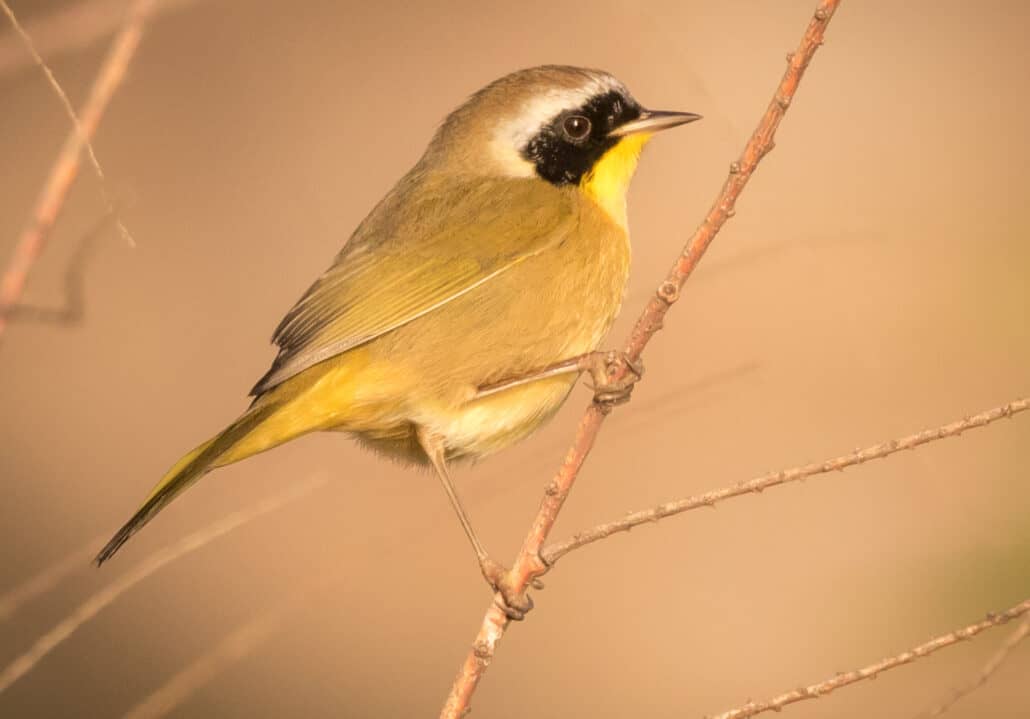Perhaps not yet on most birders’ maps, Fir Island Farms State Fish and Wildlife Reserve, a unit of Skagit Wildlife Area in northwest Washington State’s Skagit Basin, is one to watch. Its claim to fame is its celebrated winter visitors: tens of thousands of snow geese. Here, these 5- to 6-pound snow-white geese, with recognizable rose-red feet and bills and black-tipped wings, gather en masse, filling the sky and blanketing the fields in living white. The dark grin patch on the bill helps distinguish this lesser snow goose from the smaller, similar-looking Ross’s goose. Juveniles have a grayish hue. The birds gather here from October until April to feed on grain specifically planted for their winter reserve.
The show kicks off with an early start. With the rising sun, the snow geese stripe the sky, arriving in skeins of 20, 50, and 100 from the safety of their nighttime watery rest on Skagit Bay.
My husband and I rose early to stage a New Year’s Day watch. Northbound on Interstate 5 at about 4 a.m., we were minutes from our destination, when confusion over the exit number resulted in hesitation in our forward movement—which, coupled with the early hour and the holiday, attracted the notice of a state trooper. But the trooper quickly discerned that we were wide-eyed sober, and the road maps, printouts, and binoculars between us supported our enthusiastic, if unusual, explanation that we were headed to see the snow geese. With a smile and a “drive safely,” he sent us on our way.
Even with the delay, we were the first to settle into the parking lot. Two more vehicles quickly joined ours, followed by a handful more. At first light, we bundled watchers emerged from the waning warmth of our vehicles to train scopes, lenses, and binoculars on the sky. The day did not disappoint.
At first, the arriving strings of geese stretched few and far between, but later the bird lines kept all heads—tripod and human—spinning to trace the geese’s route from the open bay to the surrounding fields. From atop a towering pine above the parking lot, a bald eagle kept watch.
The reserve’s large gravel viewing lot is functional, not fancy. It provides safe off-road access; do not park along Fir Island Road. The limited-access dike at the lot’s end offers a good view of the bay. From the dike, the best scopes can pick up the white patches of snow geese still in their nighttime estuarine rest.
In all other directions, flat agricultural land spreads out from the viewing area, with barns and rows of trees punctuating the expanse. To the east rises the chiseled North Cascades skyline, with impressive Mount Baker (elevation 10,781 feet) in all its snowy elegance.
Historically, this wintering area was tidal estuarine habitat. With the building of dikes, the land was transformed for agricultural use. Today, the reserve is closed to hunting and covers 225 acres on the south side of Fir Island Road. This acreage is planted and harvested under contract by a local farmer, with a required winter wheat cover provided for the geese. The farmer’s adjacent planted acreage is treated as game refuge. Also closed to hunting, it extends the safety zone.
Within an hour, the snow geese had filled the field to the north of the viewing site. Eventually, though, their hunger drove them to drift into the field adjacent to the parking lot for easy viewing even without optical aids.
The packed mob of bobbing goose heads ate efficiently and incessantly, changing position as an orderly mass. Despite the crowding, squabbles over feeding spots were nonexistent. The urgency to eat was all-driving.
During their winter stay, snow geese must fuel up for the 3,000-mile spring migration to the arctic breeding grounds of Russia’s Wrangel Island. If the mammoth flight were not enough, the geese also must build adequate fat reserves to sustain them through a nesting fast brought on by scant forage, bitter cold, and the need to stay on the nest for successful incubation. With that in mind, visitors should curtail their zeal for better views. Minimize movements and keep safe viewing margins. Alarm can send the birds into energy-draining flight.
Eagles, however, have a different agenda. Throughout the day, these masters of the sky make sporadic passes over the feeding geese. Each pass causes an eruption of wing beats, sending forth a skyward-spiraling white cloud of squawks and dizzying movement, a chaos so thick it blots out all view of Mount Baker and the surrounding North Cascades neighborhood. For the eagles, the flushing allows them to isolate weakened birds upon which to prey. For onlookers, the goose confetti is sheer spectacle. Even when the birds are feeding farther afield, the liftoffs amaze. Generally, though, the orderly feeding and the mystery of the birds’ synchronized internal clocks hold watchers mesmerized. Seeing the geese in life gives staggering significance to the numeric counts, which have been increasing. Manager Belinda Schuster suggests you take time to scan the white sea for other birds. Interlopers and off-course travelers do occur. A recent head-scratcher was a crane native to Eurasia (likely escaped from captivity) that settled among the snow geese.
The numbers and mix of juveniles to adults vary annually. Weather and habitat changes both here and at the far-North breeding grounds can alter timing and population composition. A poor winter crop here could cause the birds to feed elsewhere in the region, or a good crop in the North could encourage the geese to linger in British Columbia’s Fraser Valley. Harsh freezes in breeding grounds can reduce breeding activity or bring on failure, reducing juvenile numbers, as was the case a couple of years ago. When all conditions are good, the payoff is big.
As the day wore on, a late-afternoon thaw of the freshwater channel in the immediate field caught the notice of the flock. In twos and threes, the birds filed down the steep bank into the channel, until not a liquid inch was visible. Despite the splashing, rule prevailed.
Snow geese star here, but other sightings engage visitors, as well. Tundra swans (common from October to February) passed overhead in groups of three, four, and six, but generally followed different flight paths. Also seen were northern harriers, red-tailed hawks, and small birds of the brush. Some 180 bird species have been identified in the Skagit Valley area.
Travel Tips
The reserve is in northwest Washington State, 60 miles north of Seattle. Reach the designated viewing area west off Interstate 5 at exit 221 (Lake McMurray/Conway). Drive 0.1 miles west from the freeway, turning north on Fir Island Road. Continue 3.2 miles, turning left (south) onto the reserve’s gravel access road. Parking is at road’s end in 0.5 mile. A Discover Pass (purchased online at discoverpass.wa.gov or wherever hunting and fishing licenses are sold) or the vehicle pass issued with hunting and fishing licenses is required. Leave pets at home or in your vehicle. A portable toilet is generally provided during peak winter watch.
Bring warm clothing and footwear, drinking water, a thermos with a hot beverage, snacks, binoculars, scopes, and extra batteries and digital cards/film. At wildlife area headquarters, vault toilets and a dike walk further serve visitors. Reach the headquarters off Fir Island Road (1.4 miles east of the Fir Island Farms Reserve turnoff or at mile 1.8 when arriving from the freeway). Take Wylie Road left to the T-junction and head left to either of two parking areas. Birds here include eagles, raptors, song and upland birds, shorebirds, waders, and waterfowl.
Contact Skagit Wildlife Area at 21961 Wylie Road, Mount Vernon, WA 98273, or by phone at (360) 445-4441. Visit wdfw.wa.gov for more information.
Other Stops
If weather, time, and road conditions on Highway 20 (exit 230 off I-5) allow, follow the Skagit River east upstream to its Cascade Mountains headwaters and one of the lower 48 states’ richest concentrations of wintering bald eagles from November through February (peaking in January). Seek the birds in the naked limbs of cottonwoods, among firs, and on gravel bars. Howard Miller Steelhead Park in Rockport, Milepost 100 Rest Area, and Marblemount Fish Hatchery are suggested stops. For more information, go to skagiteagle.org.
Besides Fir Island Farms Reserve, Skagit Wildlife Area includes 15 other units in the Skagit River drainage, with the majority of the wildlife property in western Skagit County. For Upper Skagit eagle watching, the wildlife area’s Bald Eagle Natural Area at the Sauk River confluence is reached by taking Highway 20 east to Highway 530 south at Rockport. After crossing the river, follow Martin Road to the site. For information about other sites, call (360) 445-4441 or visit wdfw.wa.gov.
Padilla Bay National Estuarine Research Reserve sits to the northwest. From I-5 at Burlington, take exit 230 and follow Highway 20 west toward Anacortes for about 6 miles. Turn right onto Bay View–Edison Road and continue north past Bay View State Park. The Breazeale Interpretive Center (open Wednesday through Sunday) will be on your right a quarter-mile past the park. Trails and parking are free and open daily. The site offers fine birding, with trumpeter and tundra swans, geese, ducks, loons, bald eagles, hawks, dunlins, and more. Contact the Research Reserve at 10441 Bayview–Edison Road, Mount Vernon, WA 98273, or by phone at (360) 428-1558. More information can be found at padillabay.gov.




